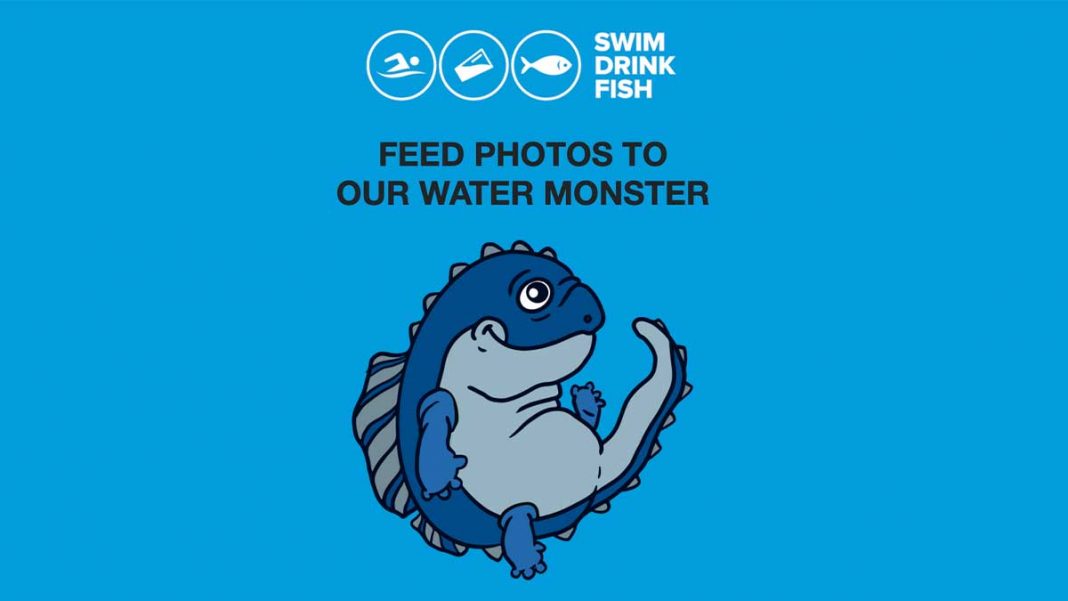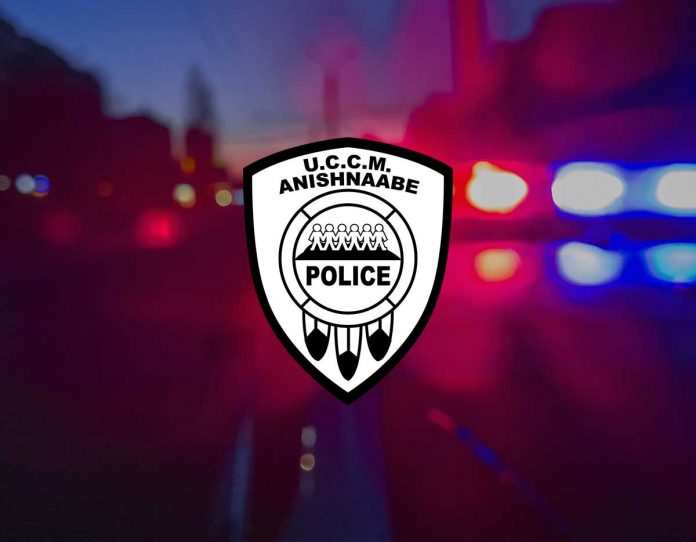Swim Drink Fish program asks for photos of waterway conditions to help feed ‘Gassy’
TORONTO – A benevolent monster named Gassy is inviting everyone who will be on or near water this season to become citizen scientists by sending in photos of waterborne objects which will train a computer how to identify things like trash, pollution and wildlife as part of a Swim Drink Fish Canada initiative.
“Gassy helps everyone become a citizen scientist. There’s so many of us, like fishermen, out on the waterways and we see so many things from wildlife to pollution, plastics, litter and even water levels,” said Mark Mattson, president of Swim Drink Fish Canada and Lake Ontario Waterkeeper.
“Governments don’t have the funds for massive data collection on this scale and we don’t see those programs in place, so we know citizens will have to be the eyes and ears to protect swimmable, drinkable, fishable water,” he said.
Enter Gassy.
Gassy is a shortened and colloquialized name for Gaasyendietha, a Seneca (a member people of the Haudenosaunee Confederacy) legend of a terrible, fire-breathing dragon-like monster that lives in Lake Ontario and other deep-water areas in the region.
By shortening the name and giving it a cute digital makeover, Swim Drink Fish turned the horrible beast into “a fat little photo monster,” said Mr. Mattson with a laugh.
Gassy is a portal for citizen scientists—read: anyone with a photo-taking device such as a phone and an internet connection—to share what conditions they see on natural waterways. Users simply take a photo of what they see, whether it’s trash, a possible sewage spill, plastic debris or even natural wildlife, and ‘feed’ it to Gassy who digests the photos and becomes, well, gassy.
“We already have our Swim Guide digester that takes in information from more than 8,000 places now about swimming water quality. We realize data is important but we want to make sure it’s useful to people, such as if the water level is really high or there’s more or less fish and wildlife,” said Mr. Mattson.
“Photos are evidence. When they’re dated as they’re uploaded through Gassy, and location-tagged (if the photographer chooses to record and share that information) it helps us build a basis of water quality,” he added.
The first batch of photos will be analyzed by expert object-spotters who will categorize the objects they see. That data will be fed through Gassy’s artificial intelligence system several times until it learns how to identify and classify objects in photos reliably on its own.
The popular smartphone app iNaturalist is similar in nature. It identifies flora and fauna in photos using AI and users can report sightings of the plants and animals they see, providing invaluable data for researchers and biologists. There is also a community aspect where iNaturalist users can see other users in their area and if there have been any recent sightings nearby.
The app is designed for anyone who spends any time near water, whether they live along the shores, go fishing, walk or bike near natural waterways. Once the AI network gets enough data, there is the possibility for rapid or immediate identification of foreign objects in a waterway.
“We know, for instance, if we see things like needles, condoms and tampon applicators floating near each other, that pretty much means there’s been a sewage spill, whether from an illegal hookup or a discharge. Once we know that we can take the steps to fix it, because that stuff should not be in our lakes, rivers and harbours,” said Mr. Mattson.
He added that looking after the natural environment will be more important in the coming weeks and months than it ever has been as government restrictions to stop the spread of COVID-19 ease up to try to get businesses back in operation.
“During a crisis like this, there’s a real need to create jobs, and we should, but never at the expense of swimmable, drinkable, fishable water. Never. We’ve made that mistake before and don’t want to make it again, and it’s not going to be the government that protects it. It’s going to be real people like the citizens and communities who volunteer for these efforts,” said Mr. Mattson.
He added that often, governments will try to navigate between maintaining public health measures and allowing industries to re-open quickly, but this can ironically create major public health hazards through issues like pollution.
So far, response to Gassy has been strong despite not formally advertising the service. More than 160 people had begun using the service as of April 21, roughly a week after its launch, with a majority of those being anglers taking to the newly opened waters.
“When issues happen on the waterways, they’re very temporal. If you don’t get the evidence as it happens, it’s hard to get anything done about it. The fishermen out and about are really starting to use it and they’re finding incredible stuff,” said Mr. Mattson.
Swim Drink Fish also organizes six citizen science water quality monitoring hubs around the Great Lakes, including one in Zhiibaahaasing First Nation on Western Manitoulin. These get funding from Environment and Climate Change Canada’s Great Lakes Protection Initiative and Anishinabek Nation. Three more hubs are planned to start operating this year and next, with two of those being located in First Nations.
The Zhiibaahaasing water quality hub’s community monitoring co-ordinator Chelsea Antoine said Gassy’s software was incredible. In last year’s monitoring season, the most common pollutant she found was cigarette butts.
“This tool would be great for Manitoulin Island because it can help collect information about where pollution is on the Island and the most common types of pollution. People on the Island can use Gassy to help collect that information,” she said.
To help feed Gassy and become a citizen scientist, upload your photos to Gassy.SwimDrinkFish.ca.





